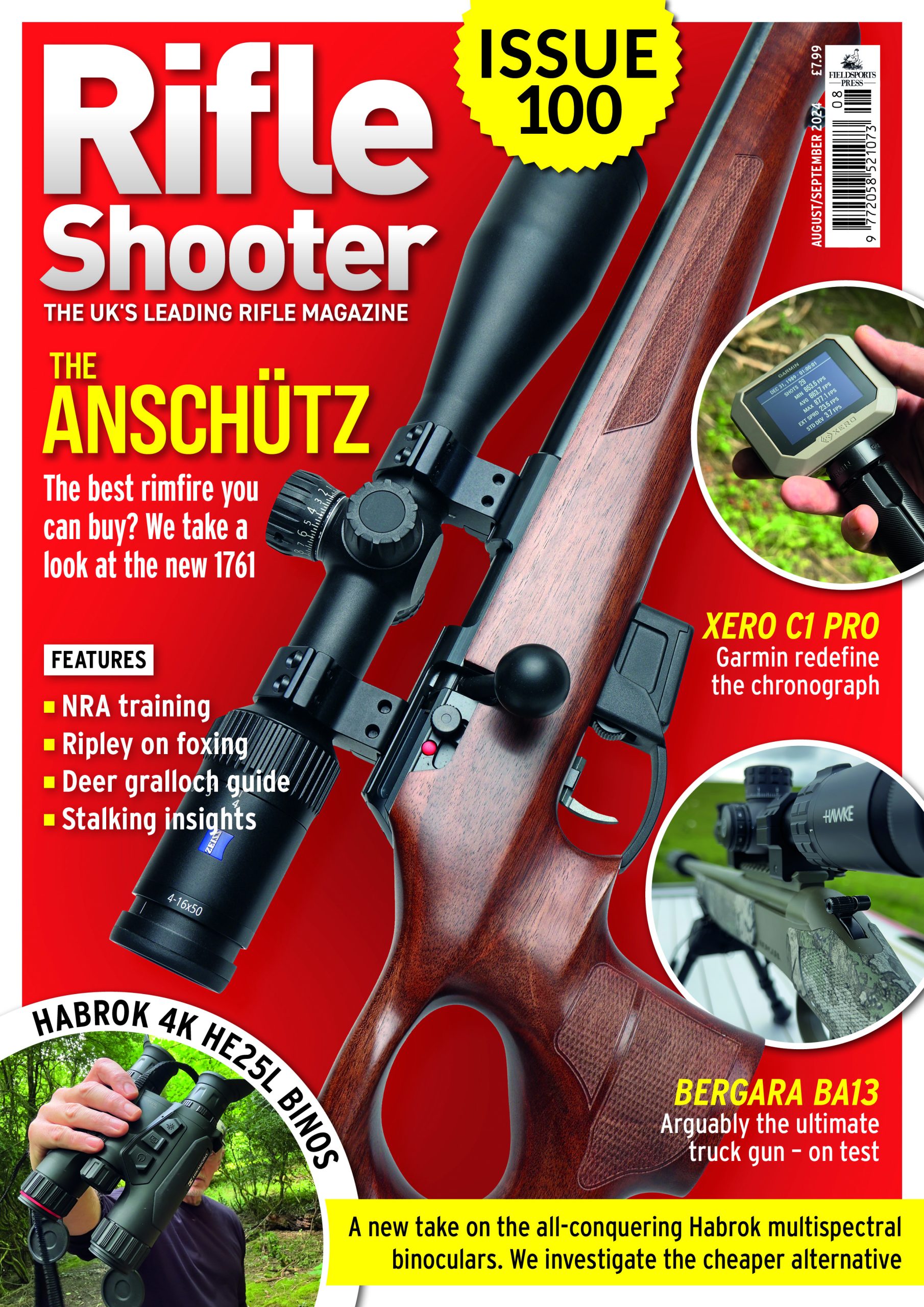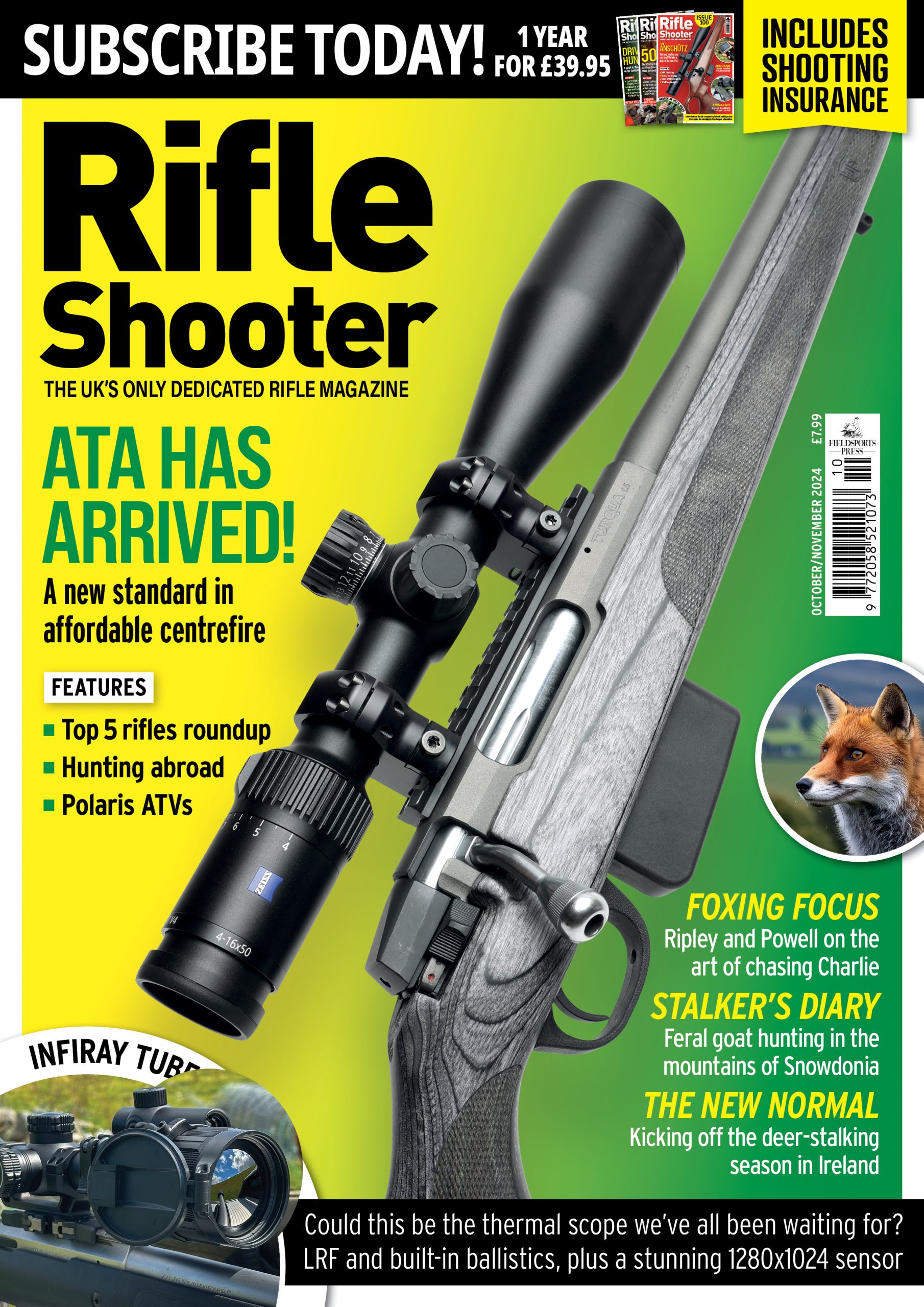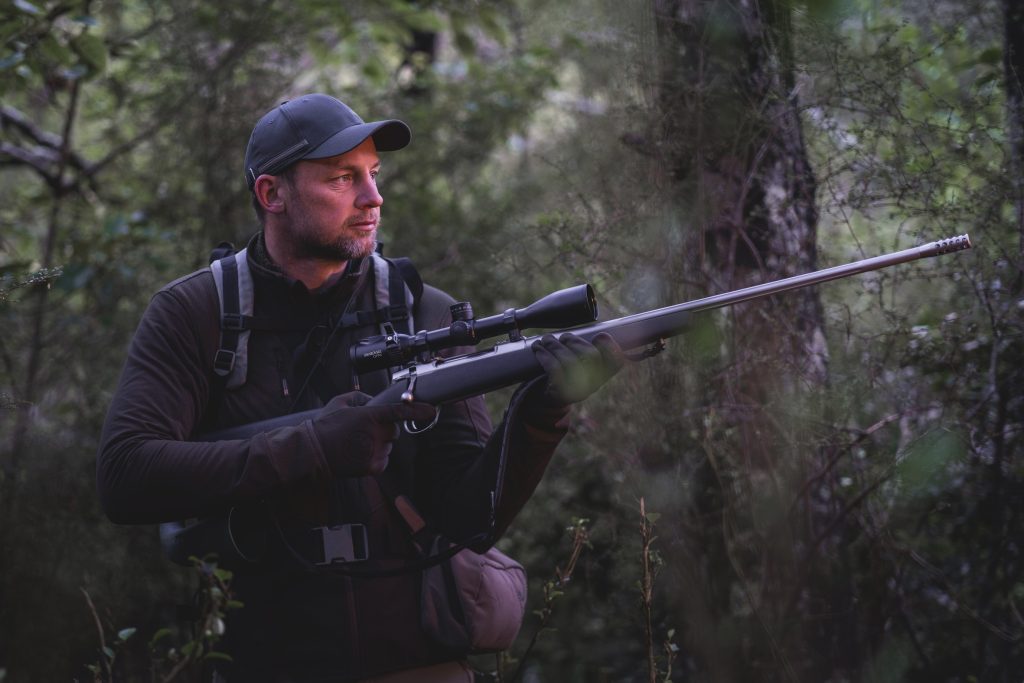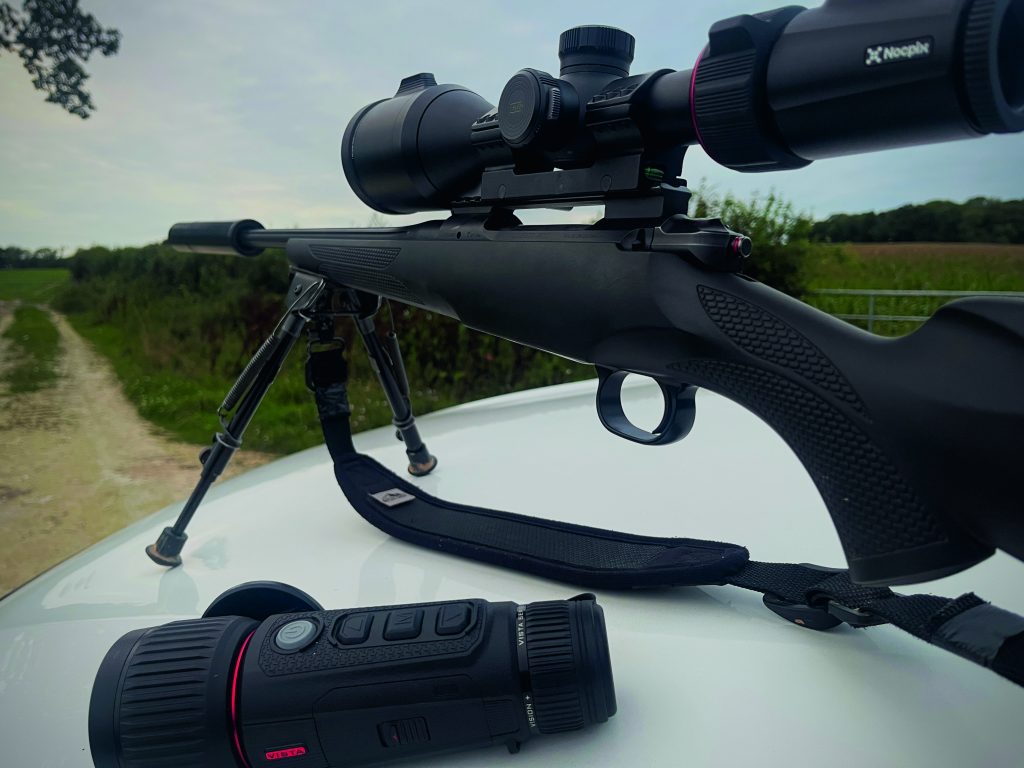Modern foxing with night vision & thermal
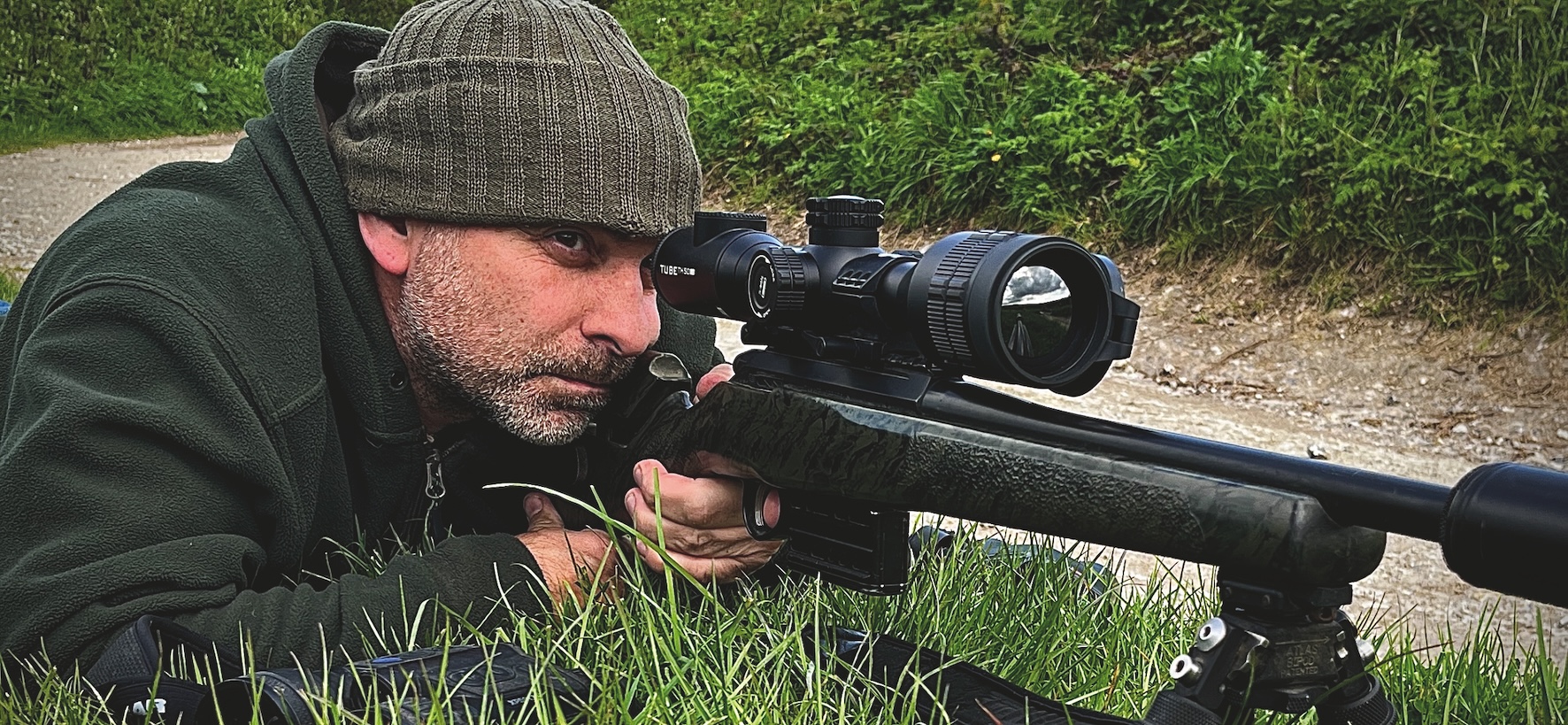
From lamps to LEDs
Foxing once meant carrying heavy lamps and batteries. A motorcycle battery on your back was the norm. Today, a compact scope-mounted LED torch throws a beam hundreds of yards, in multiple colours, with no cables.
This leap has made night shooting more accessible for newcomers. Affordable technology has opened the field.
The first night vision scopes
The Pulsar N550 marked a turning point. It wasn’t perfect, but it paved the way for better optics.
The improved N750 helped many shooters take foxes at night, though eye shine was often blinding.
Despite these flaws, it proved that electronic optics were the future.
Why thermal spotters changed everything
Spotting quarry is the hardest part of night shooting. A thermal spotter solved this problem.
When Pulsar released the HD38, it cost around £2,500 but gave hunters a massive edge. Like binoculars for deer stalking, a thermal spotter is now seen as essential for foxing.
Today’s models are sharper, lighter and cheaper. Many feature:
-
Laser rangefinders
-
Multiple colour palettes
-
Night vision overlays
-
Recording and streaming options
Mark’s top pick: Hikmicro Habrok. Clear, reliable, and less expensive than rivals.
Thermal scopes vs night vision
A thermal spotter is best for detection. But for taking the shot, hunters split between thermal rifle scopes and night vision.
Mark’s go-to is the InfiRay TH50 V2. It delivers sharp images and has accounted for many foxes at extended distances. It lacks a built-in rangefinder, but Mark argues this is best housed in your spotter, not your scope.
Modern night vision: affordable & accurate
Not all the best kit is thermal. The Hikmicro Alpex 4K LRF is a superb night vision scope, priced under £900.
Key features include:
-
Crisp night and day image
-
Colour daytime mode
-
Built-in laser rangefinder
-
Ballistic calculator
On a training day, it allowed a shooter to hit steel targets at 600 yards. That’s remarkable for such an affordable scope.
Practical advice for buying
Technology is evolving fast, but hunters can avoid common mistakes.
-
Buy what works now. Don’t wait forever for the “next model.”
-
Spend what you can afford. With thermal, quality often costs more.
-
Try before you buy. Field testing is vital.
-
Seek independent reviews. YouTube footage is more useful than Facebook debates.
Asking on social media can backfire. Owners often praise their kit without comparing alternatives.
Why the IR illuminator still matters
Night vision image quality depends on the infrared illuminator. Even a budget scope can perform well with a high-quality IR.
Many brands now skip cheap bundled illuminators, knowing shooters prefer aftermarket upgrades.
The future of foxing optics
The market is expanding fast. New brands are challenging established names with sharp optics and competitive pricing.
This competition drives innovation and lowers costs – great news for fox shooters. Don’t be afraid to step outside the “big names” if another product proves its worth.
Recommended kit for foxing
Thermal Spotters:
-
Hikmicro Habrok – best clarity for the price.
-
Pulsar Merger LRF – premium performance, binocular-style design.
Thermal Scopes:
-
InfiRay TH50 V2 – Mark’s favourite, excellent detection range.
-
Pulsar Thermion 2 LRF XP50 Pro – high-end scope with rangefinder.
Night Vision Scopes:
-
Hikmicro Alpex 4K LRF – versatile, affordable, with ballistic calculator.
-
Pard NV008S – compact and budget-friendly.
Related Articles
Get the latest news delivered direct to your door
Subscribe to Rifle Shooter
Elevate your shooting experience with a subscription to Rifle Shooter magazine, the UK’s premier publication for dedicated rifle enthusiasts.
Whether you’re a seasoned shot or new to the sport, Rifle Shooter delivers expert insights, in-depth gear reviews and invaluable techniques to enhance your skills. Each bi-monthly issue brings you the latest in deer stalking, foxing, long-range shooting, and international hunting adventures, all crafted by leading experts from Britain and around the world.
By subscribing, you’ll not only save on the retail price but also gain exclusive access to £2 million Public Liability Insurance, covering recreational and professional use of shotguns, rifles, and airguns.
Don’t miss out on the opportunity to join a community of passionate shooters and stay at the forefront of rifle technology and technique.
